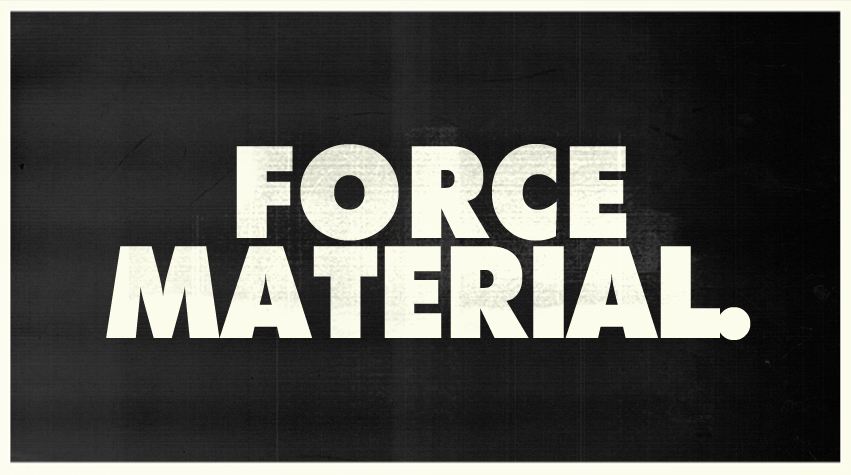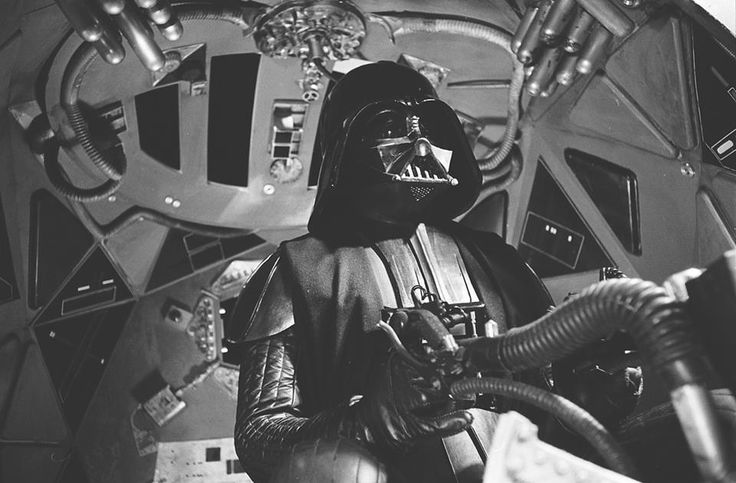Suit & TIE: The origin of Darth Vader's TIE Fighter
How George Lucas and Joe Johnston pimped Darth Vader's ride.
This month, to celebrate the release of Rogue One, we’re taking a deep dive into the secrets and stories surrounding the creation of Darth Vader. We've looked at the origin of Vader's name, look, body and voice — now let's take a look at how he got his unique TIE fighter.
The TIE Fighter, the evil Galactic Empire's starfighter of choice, was actually one of the earliest Star Wars designs.
In The Making of Star Wars, JW Rinzler writes that the TIE Fighter was one of three sketches George Lucas showed concept artist Ralph McQuarrie when they first met, in order to give McQuarrie a feel for the project (the other sketches were of an X-Wing and the Death Star).
The TIE Fighters that we see in the film don't really look all that different to Lucas' initial sketch, but there were certainly other artists involved in bringing them to the screen.
Concept model maker Colin Cantwell created the first dimensional model of a TIE Fighter, which was then modified and detailed by concept artist Joe Johnston.
Johnston, of course, went on to direct films like The Rocketeer, Captain America: The First Avenger and Jumanji.
The name 'TIE' was also an early invention, going all the way back to Lucas' first draft.
The name was clearly meant to be an acronym for something, although Lucas didn't seem to have anything in particular in mind (one ILM crewman supposedly suggested that it might have just been a reference to the fact that the ships resembled bow ties).
It was actually Johnston who came up with the acronym that has been accepted into canon, 'Twin Ion Engine', although 'Third Intergalactic Empire' was also suggested at one point.
Aside from their unusual look, the most distinctive feature of the TIE Fighter is its bizarre screeching sound, which sound designer Ben Burtt created by combining the sounds of car tires driving on wet pavement with the slowed-down trumpeting of an elephant.
The idea for the TIE Fighters to announce their arrival with such a unique noise actually has its basis in the real world.
"In World War II the super dive-bombers had an artificially created siren wail created by air ducts," Johnston said. "They didn't serve any purpose except to create this noise, which would terrify people."
The dive bomber Johnston is talking about is the Junkers Ju 87, or Stuka (from Sturzkampfflugzeug, which literally means 'dive bomber'), used by the Germans in World War II.
It really did have a Jericho-Trompete ('Jericho Trumpet'), a propeller-driven siren mounted on the leading edges of its faired main gear legs, for no other reason than to terrify the enemy in the lead-up to a dive bombing.
Incredibly, this affectation — insisted upon by air force general Ernst Udet, who had been one of Germany's greatest flying aces in World War I — actually caused the planes to lose about 20 kilometres per hour (10-20 miles per hour) through drag.
Once the enemies became used to the Jericho Trumpet, and advances in Allied engineering and tactics made the Stuka dive bombers less effective, it was decided that those 20 kilometres per hour were actually quite important, and the trumpets were ditched in favour of bombs fitted with whistles on their fins to recreate the noise after release.
Most recently, the Jericho Trumpet made a memorable appearance in the trailer for Christopher Nolan's Dunkirk, as Allied soldiers recoil in horror when they hear a Stuka dive bomber approach. (Funnily enough, the first seven minutes of Dunkirk will play before Rogue One in select IMAX theatres.)
You might have noticed that we've only talked about the standard, garden-variety TIE Fighter so far, and not Darth Vader's unique experimental ship. That's because, throughout production, Vader's ride was the standard TIE Fighter.
In John Knoll's excellent book, Creating the Worlds of Star Wars: 365 Days, the ILM effects guru explains that the only full-sized portion of a TIE Fighter built for the original film was the cockpit, which could be split in half, front to back, for camera access.
Much like the X-Wing cockpit, only one TIE Fighter cockpit was actually built, and it was used for all the shots of the TIE pilots inside their ships, including Vader. It was only after principal photography had wrapped that Lucas decided it would be easier to tell Vader's ship apart from the others if it had a unique design.
Joe Johnston was tasked with coming up with the new design in a hurry. Because Lucas wanted to use the shots he already had of Vader in the basic TIE cockpit, he couldn't stray too far from that ship's design.
So, according to Ryder Wyndham and Peter Vilmur's Vader reference book, The Complete Vader, Johnston turned to a sketch he had already done for an Imperial boarding craft with angled wings that had been cut from the script for inspiration (this design was eventually realised as the TIE Bomber in The Empire Strikes Back).
The result, Johnston wrote in The Star Wars Sketchbook, was "in essence, 'next year's model', faster, sleeker, and almost bat-like with its angled-in wings". The design was "one of gothic evil, as if the Empire fully intended for this to be a terrifying psychological weapon."
Johnston's new sketch was brought to life by model maker Steve Gawley.
Sadly, after Darth Vader's defeat at The Death Star, we didn't get to see his TIE Fighter again in the films — although it did make a memorable return in a Star Wars Rebels episode, The Siege of Lothal, that finally showed us Vader's piloting skills in full flight.
Given that Vader's screen time in Rogue One is likely to be limited, it seems unlikely that we'll get to see his TIE Fighter in the film — but if we do, we'll be ready for it, in all its sleek, terrifying glory.
Force Material is a podcast exploring the secrets and source material of Star Wars with hosts Rohan Williams and Baz McAlister. Listen and subscribe on iTunes, Spotify, iHeartRadio, TuneIn, Stitcher, PlayerFM and Castro; stay in touch with us on Facebook, Twitter and Instagram; and support the show by browsing our range of shirts, hoodies, kids apparel, mugs and more at TeePublic.













